Aboriginal Rock Art : The Enigmatic Wandjina Gods
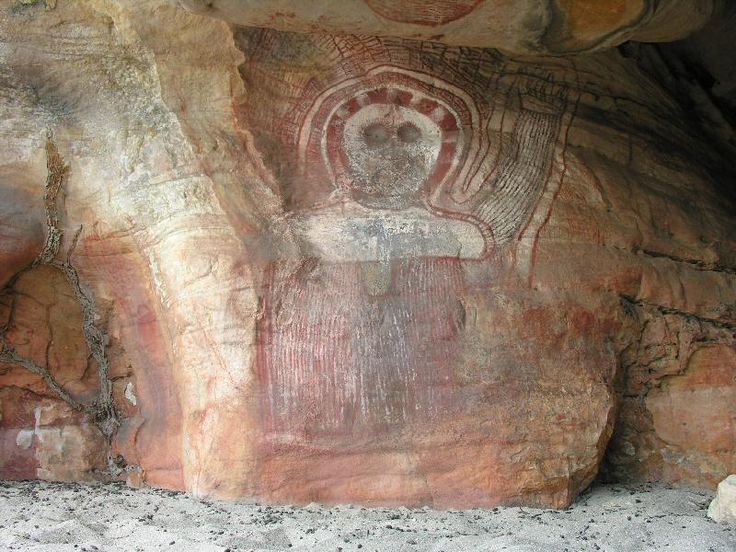
The story behind the discovery of aboriginal rock art in Australia, and the finding of the mysterious Wandjina paintings, begins in the early stages of 1900.
In 1938, Dr. Andreas Lommel, a member of the Frobenius Institute, lived for several months in the northwestern part of Australia, in the Kimberly region, with an aboriginal tribe called Unambal, a culture that has existed for at least 60,000 years.
During this period, Lommel recorded and photographed the daily life of these hunter-gatherers who still live in the Stone Age.
Through his relationship with this culture, the researcher was able to gain access to a cave considered sacred by the aborigines, in which the enigmatic ‘Wandjina’ were represented, rock paintings of mythological beings connected with the creation of the world.
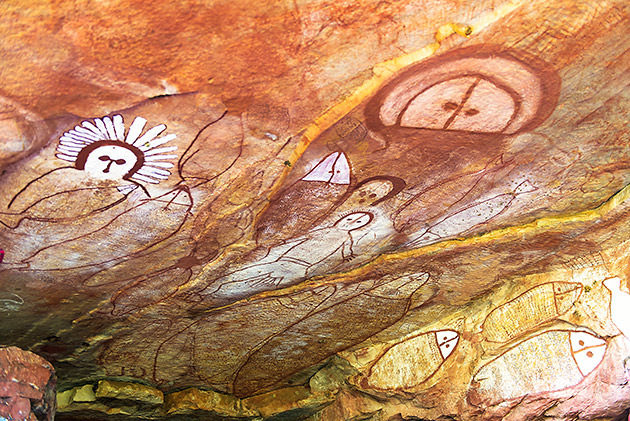
Kimberly is the only place in the world where these strange beings are represented. According to the researchers, these are very old drawings, at least as old as the Aboriginal culture that makes them.
The Unambal tradition has it that the members of the tribe repaint the images, in order to ensure continuity and not lose the memory. For these men, it is something very important.
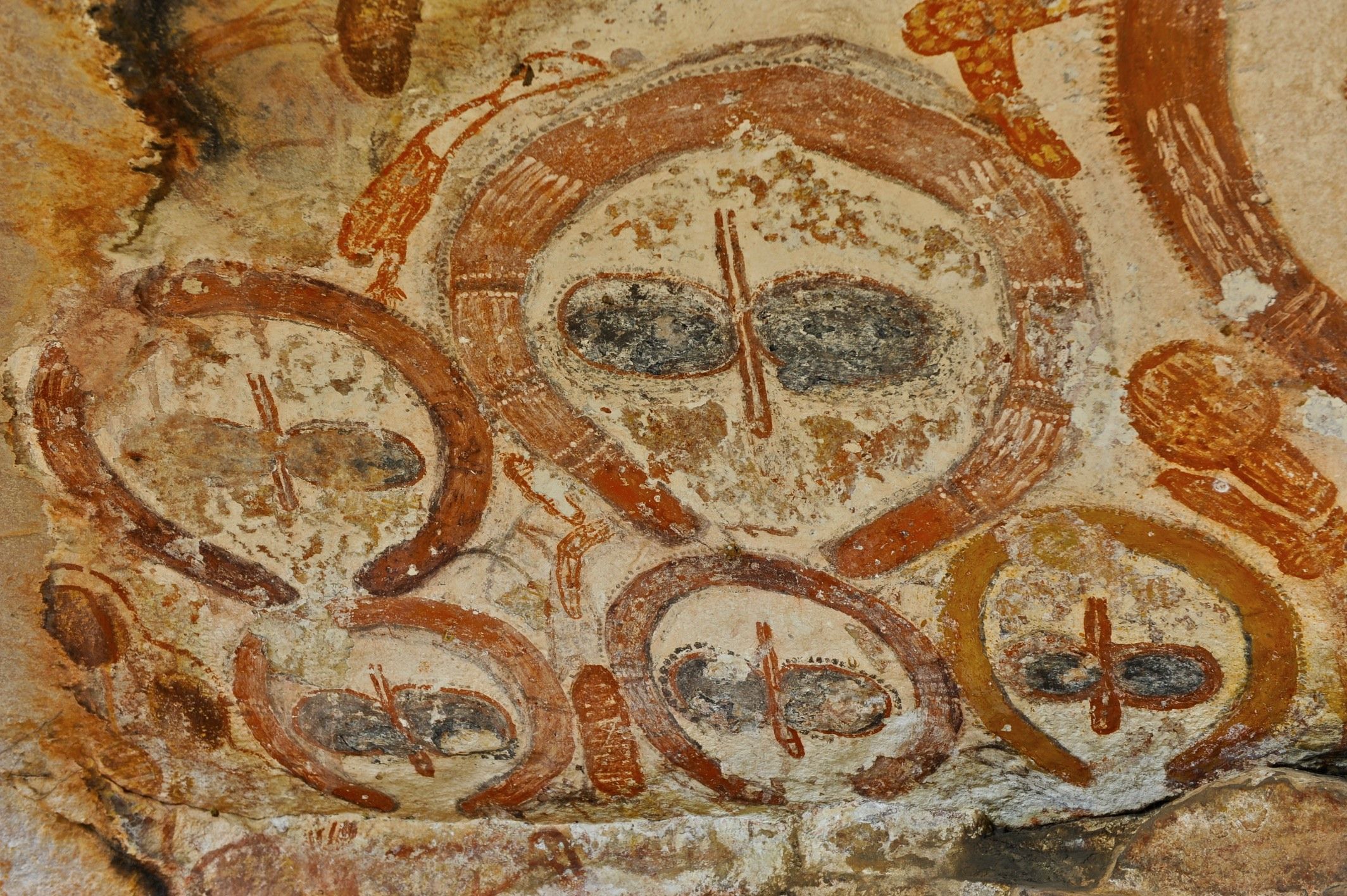
The paintings have received all sorts of interpretations: from the representation of stylized humans, or even owls, up to the Theorists of the Ancient Astronauts, according to which the Wandjina are ancient non-terrestrial travelers who descended on Earth in the mists of time.
Many believe that extraterrestrials had a direct role in the creation of the world and the legends of the Aborigines tell of extraordinary events.
Despite the antiquity of the Unambal, traditional law and culture are still active and alive. The Worora, Ngarinyin, and Wunumbul are the three tribes that worship the Wandjina and consider themselves the keepers of the oldest cave paintings in all of Australia.
What seems to be most interesting is the style used by the Aborigines to depict these enigmatic divine beings: white faces, no mouths, big black eyes, and a head surrounded by a halo, or some kind of helmet.
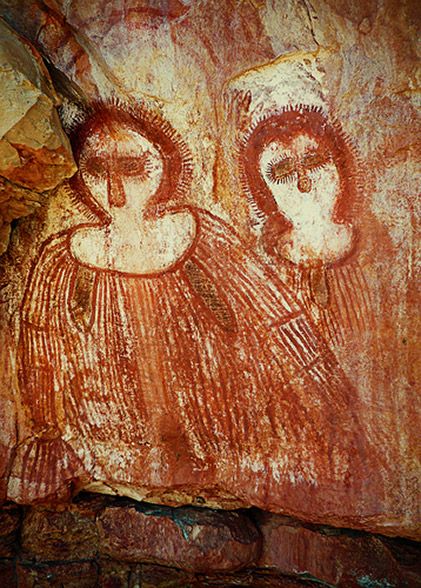
For this reason, many people wonder why the aborigines painted the Wandjina in this way, with white skin while the artist wanted to represent another aboriginal with black skin, to why are the eyes always painted disproportionately to the face and nose, and why are all these beings without a mouth.
The images of the Wandjina are very surprising, but what is truly fascinating is the oral tradition that has passed from generation to generation. As reported on the Bradshaw Fundation website, Aborigines see the Earth as the great Ungut snake.
The Milky Way is seen as another snake, called Wallanganda. These two snakes gave birth to creation, dreaming of all creatures living on Earth, including the spiritual ancestors of the Aborigines and the Wandjina themselves.
These creatures were ‘beings of the sky’ or ‘spirits of the clouds’ descended from the Milky Way during the ‘Dream Time’, to teach the laws, precepts, and rules of behavior. “These and other traditions were taught to the aborigines”, explains Ivana Malpede, a researcher who spent ten years in Oceania, “Wandjina, the Gods who represented the universe and who have left many tales and oral traditions linked to particular stars, such as Beta and the Pleiades. According to local traditions, the Wandjina, a term that means ‘the Whole’, lived in a time called ‘of the parents’, an era in which some of these Gods, described as gigantic and mouthless human beings, with radiant heads and black eyes, they taught the laws to men ”.
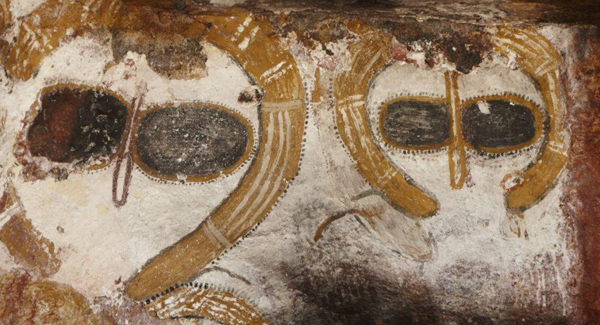
According to tradition, the Wandjina were able to change shape at will: now it could be a Wandjina, now a human, now an animal. Furthermore, when these mysterious visitors left the planet, they split into two groups: one group hid in the bowels of the Earth; the other group, on the other hand, returns to the sky.
The Aborigines, worthy of the most advanced alien conspiracy theory, claim that, even after their demise, the Wandjina continue to control everything that happens on Earth, in the sky, and in the sea.
These are ancient traditions that put us in direct contact with our remote past. Their ancestors arrived in the region probably 60,000 years ago, although the dating remains uncertain.
The discovery of ancient objects in the region suggests that the area was already inhabited 174,000 years ago, which is in contrast to the shared theory according to which the aborigines migrated from Africa about 60,000 years ago, with some anthropologists even hypothesizing that Homo Sapiens may have been originated in Australia.
